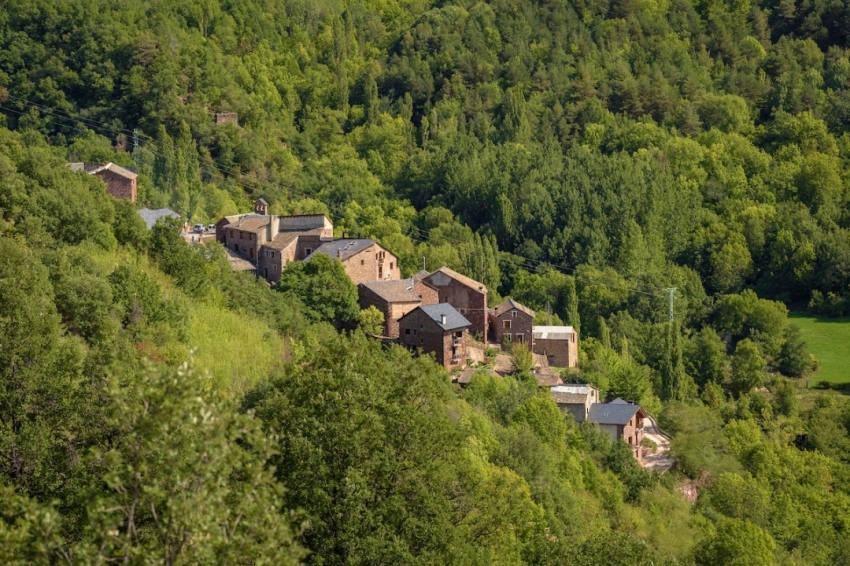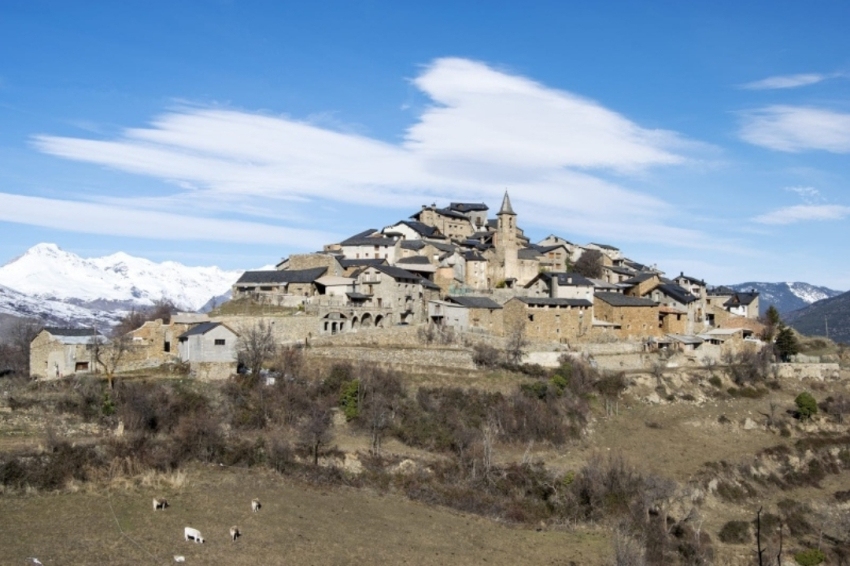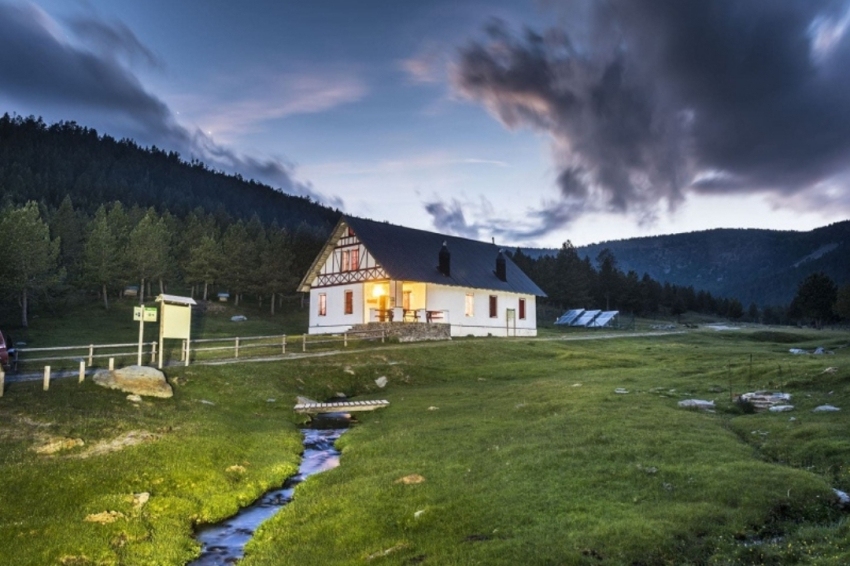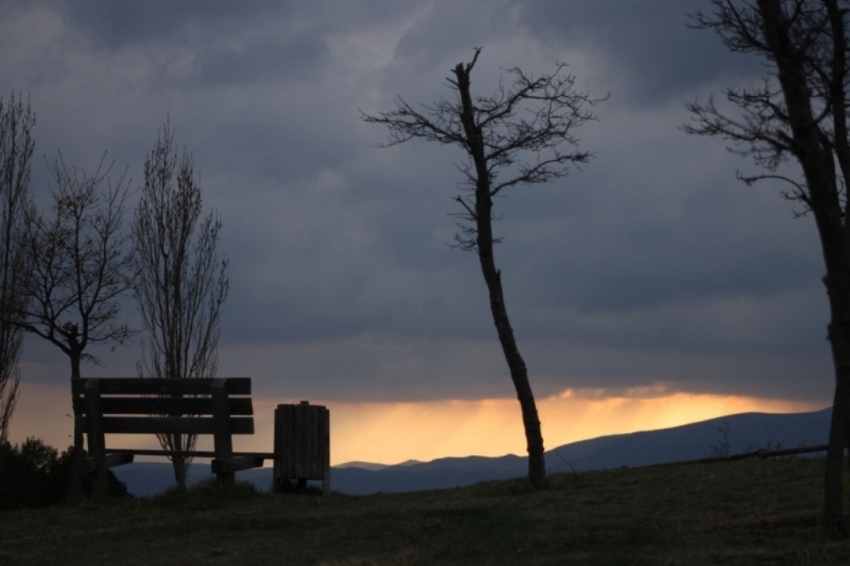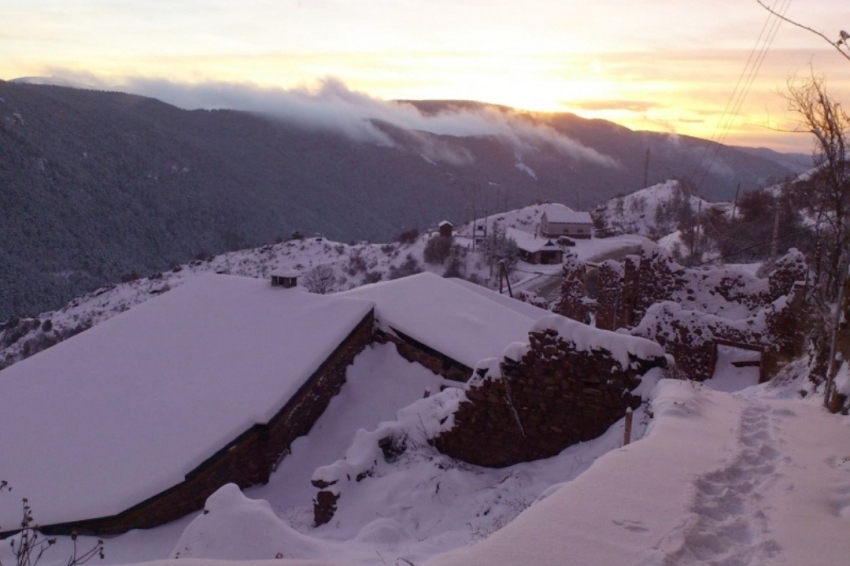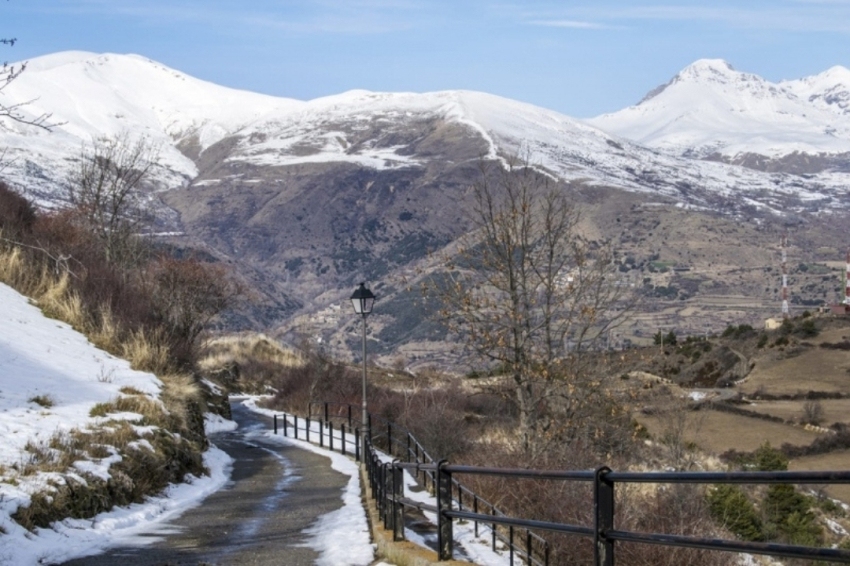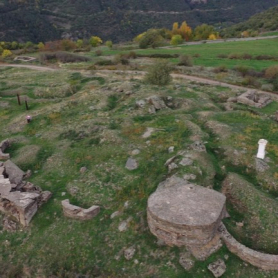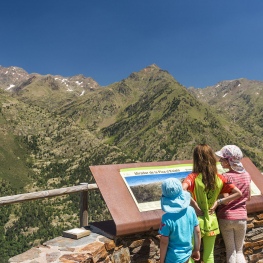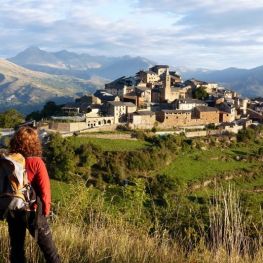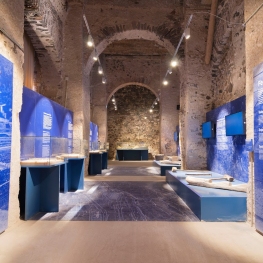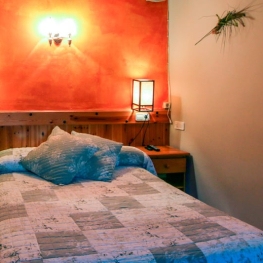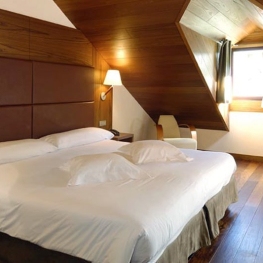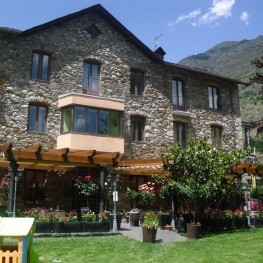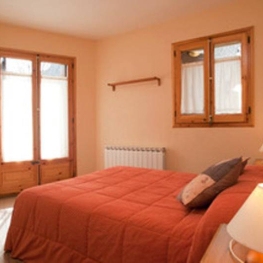Soriguera
Nestled among the magnificent valleys and mountains are the 14 small villages of the municipality of Soriguera, whose main activity is centered on livestock farming. In the Siarb Valley, the municipality's main valley, the rich historical heritage, comprised of Civil War bunkers and vestiges of the abandoned medieval village of Santa Cruz de Llagunes, coexists with vividly colored geological formations.
From its 2,439-meter summit, the imposing peak of Orri offers a unique vantage point overlooking the Pyrenees and the municipality's most spectacular sites, included in the Alt Pirineu Natural Park. Exploring the traditional paths is undoubtedly the best way to discover all the charms hidden in the villages and mountains of the area.
The municipality of Soriguera, which already existed in medieval times, was known as the Viscounty of Pallars. The viscounty was established during the 9th century by the Counts of Toulouse, who were also Counts of Pallars. It was initially called Pallars, then Viscounty of Siarb, and finally Viscounty of Vilamur. The viscounty passed from the hands of the Count to his heirs and was finally acquired by the Dukes of Medinaceli.
The Viscount of Vilamur was the mayor of the castles belonging to the Lord of Malmercado. Viscounts Pere and Stranea established the Verneda Market where Gerri salt was sold, and Counts Artal and Guillermina had Mr. Arnau de Malmercat sign a protection act.
Malmercat Castle was attacked by the Bord del Pallars in 1373 and became war booty, along with Vilamur Castle. The lands of the Count of Pallars eventually became part of the territory of the Dukes of Medinaceli.
In these villages, where the economy has been based on subsistence, migration has left many villages empty. The Spanish Civil War brought resentment and jealousy to the surface, and the Vilamur fortifications are now part of the Memorial Spaces of the Democratic Memorial.
Places of interest
Deserted medieval village of Santa Cruz de Llagunes
Going up the Port del Cantó on the N260, between Sort and La Seu d'Urgell, almost reaching the summit, at 1,628 metres above sea level and with views of the entire Siarb Valley, the ancient inhabitants of the area built a walled village.
With a steep slope, a perimeter wall remains that encloses the settlement. On one side, attached to the same dry-stone wall, there is a nearly square watchtower (3.40 x 3.60 m), which was later used for the same purpose during the Spanish Civil War. In the first layers of the excavations, charred wood, bullets and shell casings were found, while at deeper levels, fragments of grey pottery from the medieval period were found.
There is a second wall, parallel to the enclosing wall, which probably served to compensate for the uneven terrain and, between the two walls, provided a patrol path that encircled the entire settlement. It is estimated that the settlement was abandoned between the late 13th and early 14th centuries. However, over the centuries, the site has been reused as a shelter for shepherds and, later, as a lookout point during the Spanish Civil War, thanks to its strategic location.
The Romanesque hermitage of the Virgin of Arboló
The Arboló sanctuary has been a place of great popular devotion and the source of many legends. It is located on the left bank of the Noguera Pallaresa River, at an altitude of 639.7 meters.
This is a Lombard Romanesque hermitage, built in the 12th century, although there are earlier references: it is mentioned as early as 920, and even in 817 a castle called "Castro Erbolone" is documented, located where the church stands today. The building presents advanced features for the Romanesque style of the time, such as the impost in the form of a dust cover that runs along the façade and side walls, and the almost square ashlars, very well worked and fitted together.
A unique element is the bell tower, a small structure open to the four winds from which prayers were said to protect the town from plagues, storms, and other evils. Its proximity to the river made the Virgin Mary of Arboló especially venerated by the rafters.
According to legend, the hermitage was built by the first Count of Pallars as a token of gratitude to the Virgin Mary, who allegedly helped him defeat the Moors there. It is also popular with young people: it is said that placing one's foot in a hole in a wall on the day of the encounter guarantees a mate for the year. With its architectural charm and privileged natural setting, the Arboló hermitage is highly recommended.
If you're looking for a place to escape the hustle and bustle of the city and enjoy the tranquility of nature, Soriguera is the perfect destination!
Experiences
Nearby routes
See all routes »- National Park of Sant Maurici and Aigüestortes (a 4.4 km)
- The main characters in the the siege… (a 4.4 km)
- The Vigatans' Covenant (a 4.4 km)
- The battles of 1714 (a 4.4 km)
- Seeking Freedom on the roads of the… (a 4.4 km)
What to do
Rafting Llavorsí
Llavorsí (a 13.4 Km)Rafting, canyoning, horse riding, hydrospeed, river canoeing, bob-coaching, hiking, snowshoeing, skiing and…
Museu de Gerri de la Sal
Baix Pallars (a 10.3 Km)A unique story, with salt and the pyrenees as protagonists. The Gerri…
Where to eat
Roch Hotel - Restaurant
Sort (a 9.2 Km)A small, family-run rural hotel, very welcoming, where its owners (Xavi and…
Where to sleep
Roch Hotel - Restaurant
Sort (a 9.2 Km)A small, family-run rural hotel, very welcoming, where its owners (Xavi and…
Hotel Riberies
Llavorsí (a 13.5 Km)A cozy and modern mountain hotel located in the village of Llavorsí,…
Hotel i hostal Vall d'Àneu
Esterri d'Àneu (a 27.4 Km)Two different buildings that you can enjoy 100%, whether you stay at…
L'Hort del Metge
Vall de Cardós (a 25.7 Km)L'Hort del Metge is located in the village of Lladrós, in the…

